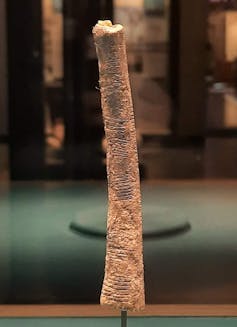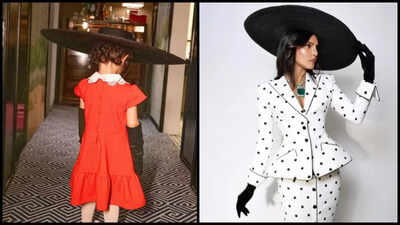It’s been a bumper year for incredible anime adaptations, with the likes of Freeze and Delicious in Dungeon faithfully bringing their source material to life on the small screen. But Dan Da Dan‘s anime adaptation might already be a dark horse contender for the best looking show of the year.

Dropping today, October 3, on Netflix, Hulu, and Crunchyroll, the first episode of Science Saru’s Dan Da Dan carries the spirit of its source material fantastically. A chaotic premiere thrusting its two protagonists together—Momo Ayase (SSSS. Dynazenon‘s Shion Wakayama), a young girl who comes from a family with ties to the occult and paranormal, and Ken “Okarun” Takakura (Demon Slayer‘s Natsuki Hanae), a lonely otaku who is obsessed with UFOs—like Tatsu’s manga before it, the series gleefully plays with form and stylization to rapidly dance between its mish-mash of genre underpinnings to create one of the most energetic anime I’ve seen in a while.
From its electric opening (directed by Abel Góngora, and set to hip-hop duo Creepy Nuts’ thrumming, bass-heavy new track “Otonoke,” already destined to become as ear-wormable as their other big anime OP of the year, Mashle‘s “Bling-Bang-Bang-Born”) through to its climax, Dan Da Dan‘s first episode jukes where you’d expect it to jive in its loving approach to the supernatural and sci-fi genres its playing in. One of the immediate strengths of Tatsu’s manga was just how fluid and kinetic it could be, defying your expectations from page to page. One turn could bring you to an action-packed splash bursting with momentum, the next detailed, visceral body horror, the one after that, stylized, cartoonishly exaggerated humor as Momo and Okarun riff on each other and contort their faces and bodies into increasingly absurd proportions.
The anime plays with this fluidity brilliantly, with virtually every scene bending styles as much as the narrative itself leaps between genres with a sense of joy. This is right in Saru’s oeuvre, one of the most impressive animation studios around right now with a body of work that covers everything from Star Wars Visions shorts, to the gross horrors of Devilman Crybabythe East-meets-West blends of Scott Pilgrim Takes Offand of course, much of the filmography of beloved director Masaaki Yuasa. Dan Da Dan is oozing with the confidence of a studio that has such an eclectic range to its name, not just in its sense of movement and its exaggeration, but in how it can rapidly flick between a grounded, cinematic approach to its drama and this over-the-top exploration of the form. When Dan Da Dan needs to be tense, or intimate, it can be, with clever tricks of framing that can make moments of horror or moments of connection between its two protagonists spark, but when it allows itself to shine with a little weirdness—a zany expression here, a stark splash of psychedelic color here (or in some cases, a lack thereof) there—its inventive visual style matches its chaotically energetic narrative in a match made in heaven.
Almost every scene in the opening episode has a wonderful little twist that keeps you in awe of how And And And looks—as when a dejected Momo, fresh off being dumped by her dirtbag boyfriend, slinks down a high school corridor in a way that’s practically slithering towards the camera, noodle-limbed and quivering with every step, only for everything to snap back to a stark, still reality when she comes across Okarun for the first time as he’s being bullied in his classroom. In the episode’s climax, in which Momo awakens to spiritual psychic powers after a invasive encounter with a group of aliens, the scene bursts with a kaleidoscopic array of bold, bright colors as Momo comes into her own, an incredible contrast to the tense, restrained horror that came moments before as the show dances around the edge of portraying a horrific moment of assault. It’s a testament to the premiere that I could go on about little visual details in practically every scene, but Dan Da Dan doesn’t just hit the ground running, it does so with a remarkably assured sense of itself, in an adaptation that could’ve very easily struggled to capture the similar confidence of Yukinobu Tatsu’s manga and its own narrative and visual flexes.
In a year of some truly fantastic looking shows—animated or otherwise—Dan Da Dan immediately stands out, a fresh burst of kinetic energy on our screens as the nights draw in for the fall TV season. Anyone who’s read Tatsu’s manga at this point knows things are only going to escalate from where the anime’s premiere leaves off, but if it can maintain that energy throughout its 12-episode season (and hopefully well beyond), we’re in for what might be one of the year’s finest bits of television.
Want more io9 news? Check out when to expect the latest Marvel, Star Wars, and Star Trek releases, what’s next for the DC Universe on film and TV, and everything you need to know about the future of Doctor Who.








:no_upscale()/cdn.vox-cdn.com/uploads/chorus_asset/file/26013756/Screenshot_2025_05_31_4.13.23_PM.png)













































